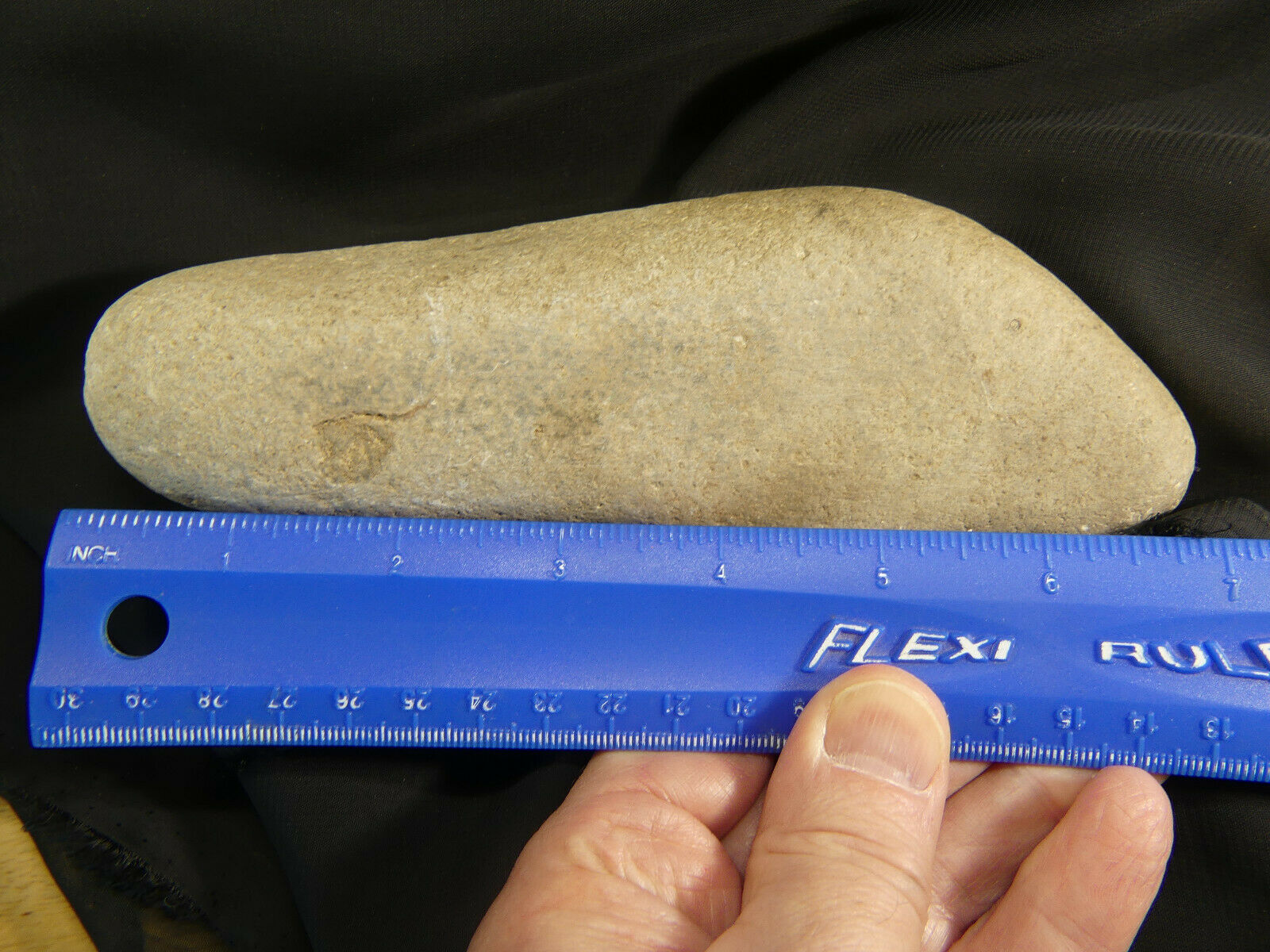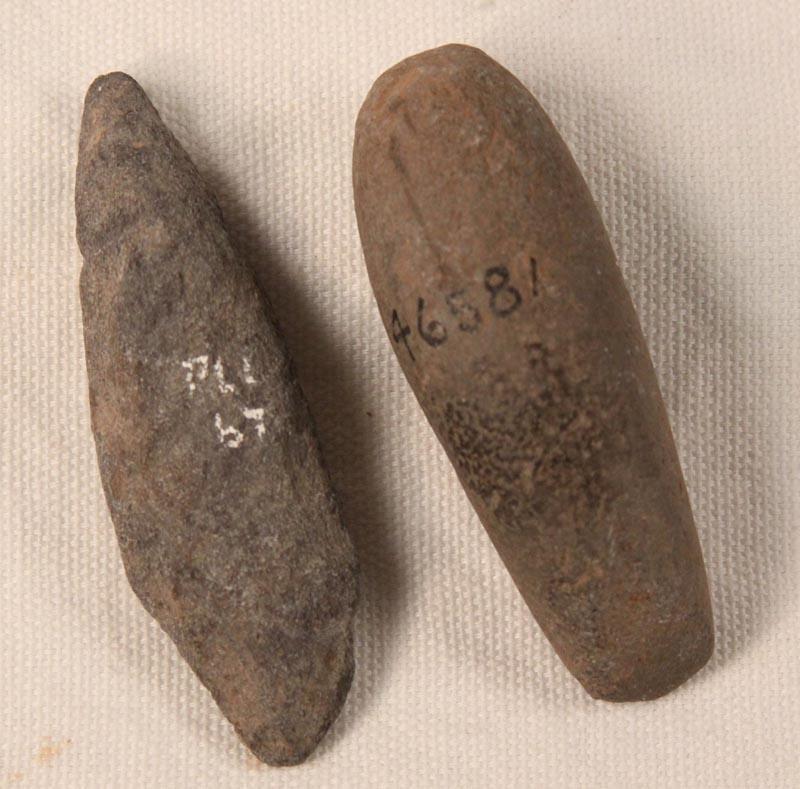-40%
XLG Mortar & Pestle. Native American Calif. Yokut People, Sierra Nevada. AACA
$ 475.2
- Description
- Size Guide
Description
Ancient CivilizationsAntiques, Artifacts & Fine Collectibles
Native American Yokut People Mortar & Pestle
Foothills of The Sierra Nevada, Northern California
c. Pre-1700
eBay Note: This item was reportedly found on private land in CA with the owner's permission prior to 1970, and thus complies with all federal, state, and local laws.
SUMMARY
Mortar
·
Material: Granite
·
Length: 6”
·
Width: 5”
·
Height: 2.75”
·
Depression Hole: 1.75”
·
Weight: 3 lbs. 13 oz
Elongated Pounding Stone/Pestle
·
Length: 7”
·
Width: 2.54”
·
Thick: 1.3”
·
Weight: 1 lb. 1.2 oz
DETAILS
This heavy, deeply depressed mortar was found in the Central Valley of California and, based on the provenance, appears to be of Yokut origin.
The Yokuts, also called the Mariposa, historically lived in the San Joaquin Valley and the western foothills of the Sierra Nevada, south of the Fresno River in what is now California.
The mortar was carved out of a piece of hard stone, that has been chipped and hammered in a portable tool. Abrasion marks are evident, as well as minor dings, chips, and abrasion/percussion marks.
The mortar also appears to have been subjected to a fire as the surface shows blackening and still retains a burned smell.
The elongate pounding stone has a formidable flat, hand grip allowing good grip on the pestle stone for the requisite crush/grind.
Both artifacts show pitting and outer abrasions—the result of years of burial within the Northern California soil.
The Yokuts were blessed with massive black & valley oak trees that produced an elongated acorn nut brimming with essential vitamins, minerals and of course, plant protein. Hundreds of bedrock-intact mortar holes dot the Sierra foothill landscapes as well as many portable mortars and pestles for grinding/pulverizing the acorn into usable powder.
YOKUTS
{Wikipedia}
Yokuts, also called Mariposan, were North American Indians speaking a Penutian language and who historically inhabited the San Joaquin Valley and the western foothills of the Sierra Nevada south of the Fresno River in what is now California.
Perhaps the Yokuts Indians are best known for the beautiful baskets which they created, and which are highly prized by collectors today.
Salt was a principal seasoning and came from salt grass which grew in swampy areas and was threshed from the grass as it dried.
They traded animal hides, baskets, bows and arrows, mortars and pestles for other things they needed like Ohlone mussels, abalone shells, salt, cinnabar, dried abalone, and olivella shells, and
Yokut pine nuts
and rabbit skin blankets
Yokuts were reduced by around 93% between 1850 and 1900, with many of the survivors being forced into indentured servitude sanctioned by the California State Act for the Government and Protection of Indians. A few Valley Yokuts remain, the most prominent tribe among them being the Tachi.
Today there are about 2000 enrolled Yokuts in the federally recognized tribe and 600 more Yokuts belonging to unrecognized tribes.
Although the Yowlumne and Tulumne Yokuts fished the rivers and lakes of the San Joaquin Valley all year long, and hunted deer, rabbit, racoons and other game in the marshes and grass lands, most of their food came from plants, particularly acorns, nuts, seeds, roots, and berries. Women gathered these staples in the Summer and Fall, and because food was plentiful there was no need to farm. If one type of food became scarce with the passing of the seasons, the Yowlumne simply found another.
ACORNS
Acorns were an important food for almost all California Indians. Women were the main acorn gatherers, and each Fall they hiked to oak groves in the surrounding foothills, hoping to gather the acorns before oak moths infested the trees. Each woman wore a net on her head that was woven like a cap and hung down her back.
From this, she suspended a large conical basket, sometimes called a "burden basket," to be filled with acorns.
After collecting, the acorns were placed in the sun to dry, then stored in baskets, sometimes for months at a time. Later, women and children cracked the acorns open with stones to remove the hard shells and smashed the soft "insides" into meal using stone bowls and
elongate pounding stones
. Often this chore was done on boulders, usually near oak trees, using holes in the boulders called "mortars". These holes became deeper and deeper with successive poundings over the years, and eventually needed to be replaced by new mortar holes as the old ones became too deep to use. Needless to say, acorn meal often contained grit, which tended to wear down ones teeth.
A bitter acid in the acorns, called tannin, would make one sick, and had to removed before the acorn meal could be eaten. To do this, a hill of sand was made with the center of the hill scooped out and lined with leaves, typically from grapevines. The acorn meal was set on top of the leaves and boiling water poured over this meal several times to leach out the tannin. Another method was to bury the shelled, but otherwise whole acorns, in marshy ground for several months to let the damp soil slowly leach out the acid.
To cook acorn meal, women mixed it with water in tightly woven baskets to make a mush and heated the mush with hot stones from the fire. These stones were dropped into baskets using sticks that were bent and tied together with sinew or twine from Yucca fibers to form loops. Constant stirring was required lest the hot stones burn through the bottom of the baskets. The acorn meal could also be made into dough and cooked on hot rocks, or rolled into hard balls to carry on a journey.
Note:
Each object I sell is professionally researched and compared with similar objects in the collections of the finest museums in the world.
I have been dealing in fine antiquities for almost 50 years and although certainly not an expert in every field, I have been honored to appraise, buy, collect, and enjoy and recently sell some of the finest ancient art in the world.
When in doubt, I have worked with dozens of subject matter experts to determine the condition and authenticity of numerous antiquities and antiques.
This documentation helps to insure you are buying quality items and helps to protect your investment.
I offer a full
Money-Back Guarantee
if a recognized authority in antiquities disputes the authenticity of this fine artifact.
Please ask any questions you may have
before
you bid!
All sales are Final, unless I have seriously misrepresented this item.
Please look at the photos carefully as they are part of the description.
Member of the Authentic Artifact Collectors Association (AACA) & the Archaeological Institute of America (AIA)
Per e-Bay's rules,
PayPal
only please!
FREE USA SHIPPING includes insurance and is accurate for all 50 States!
















